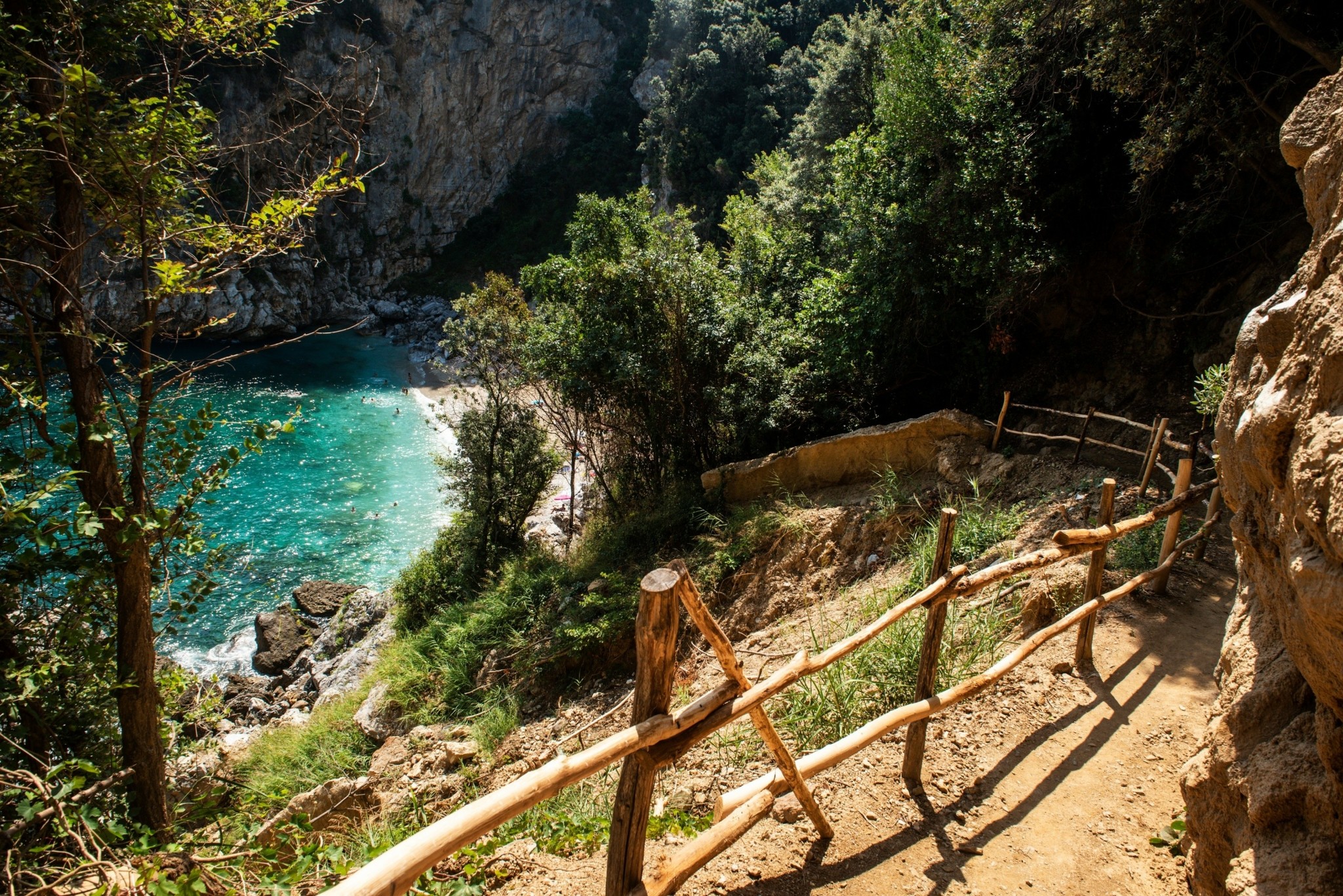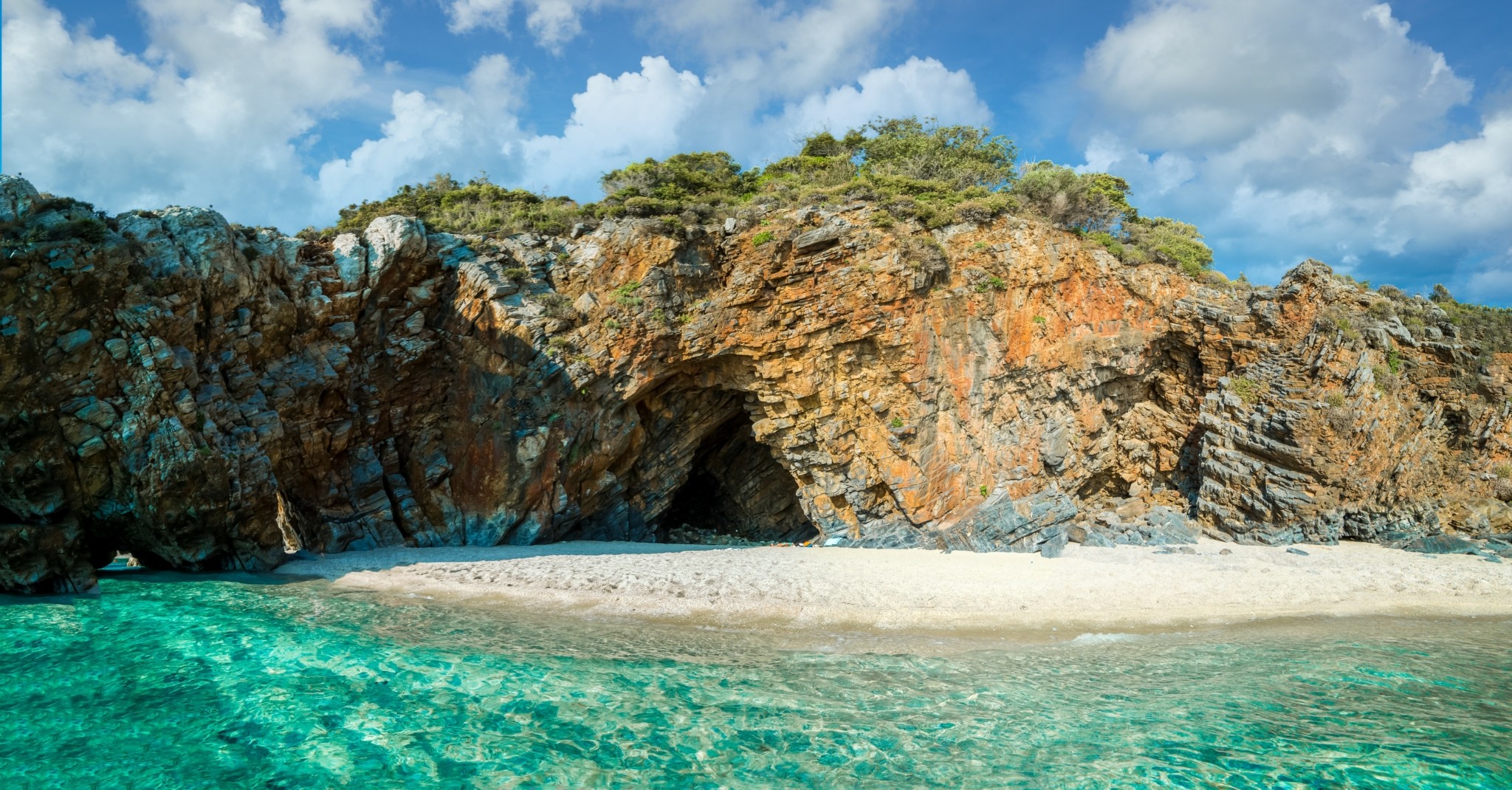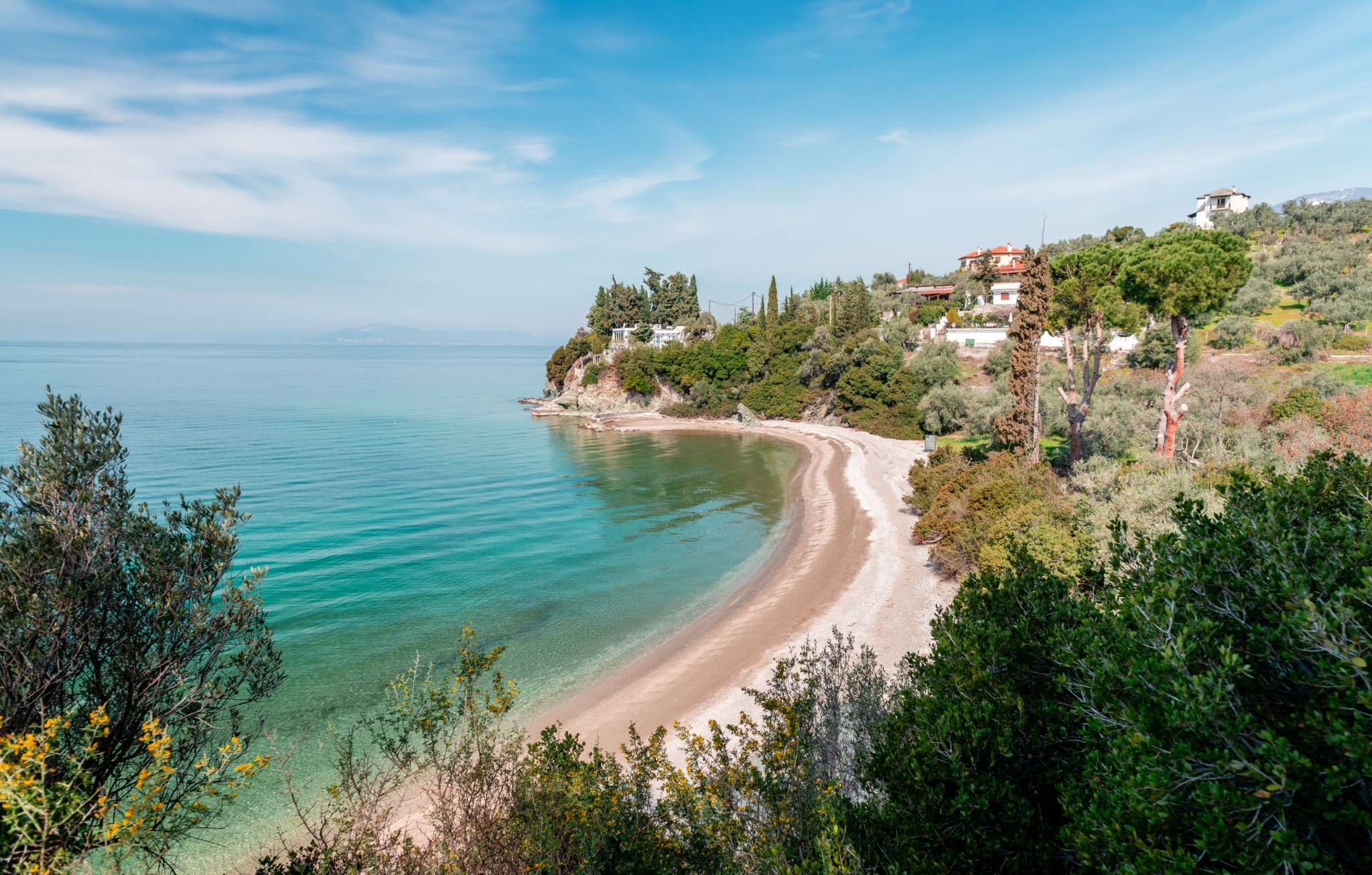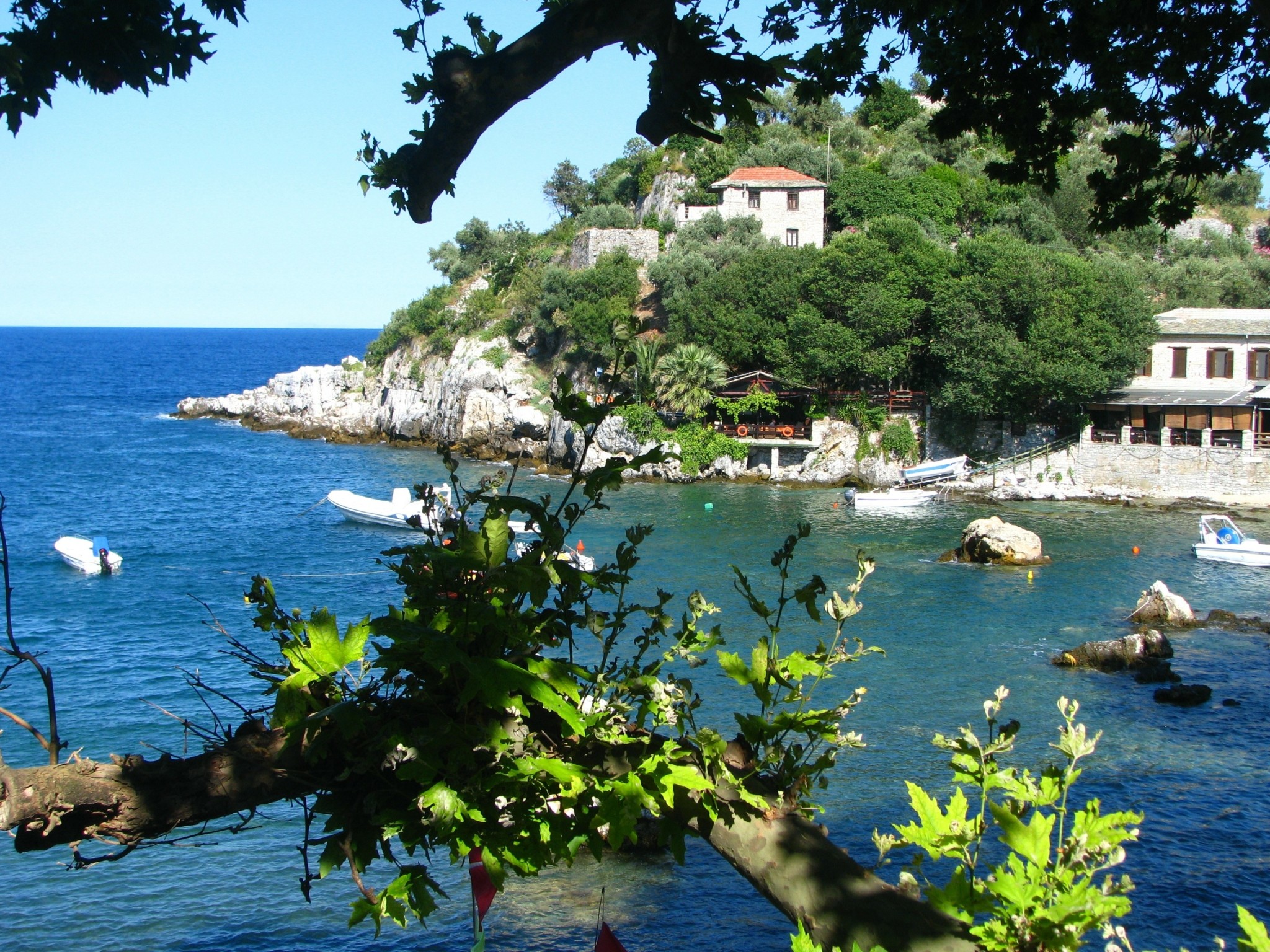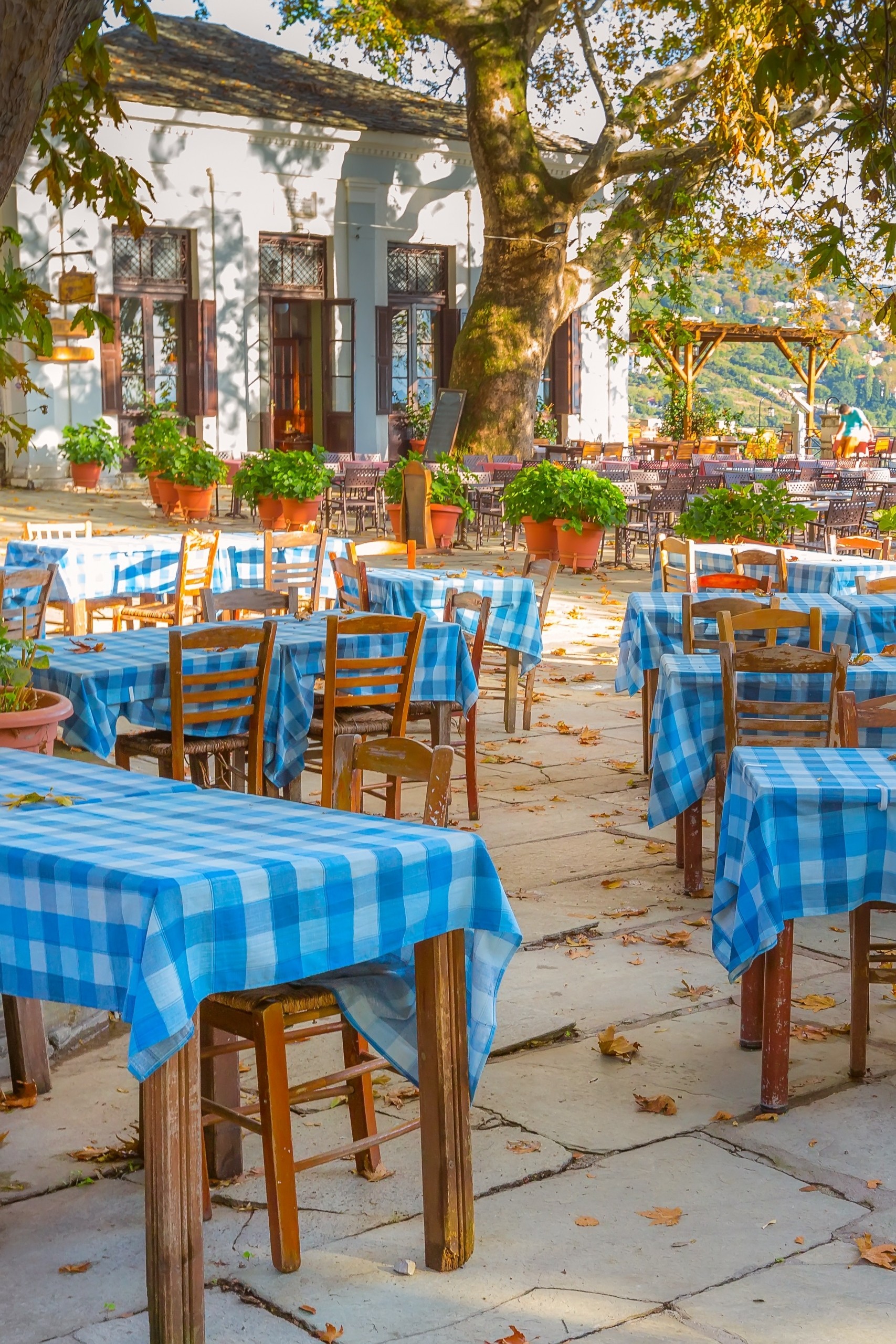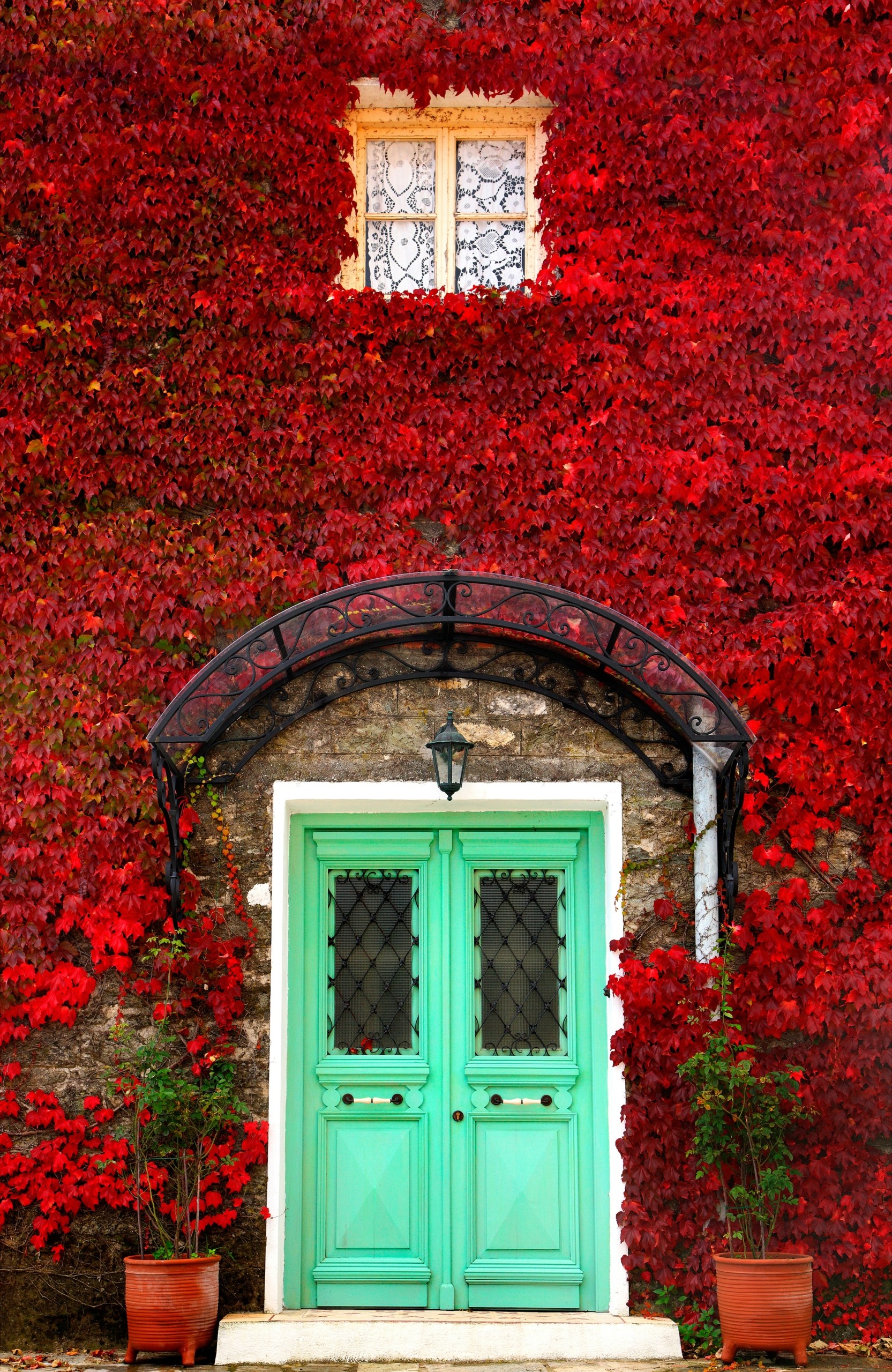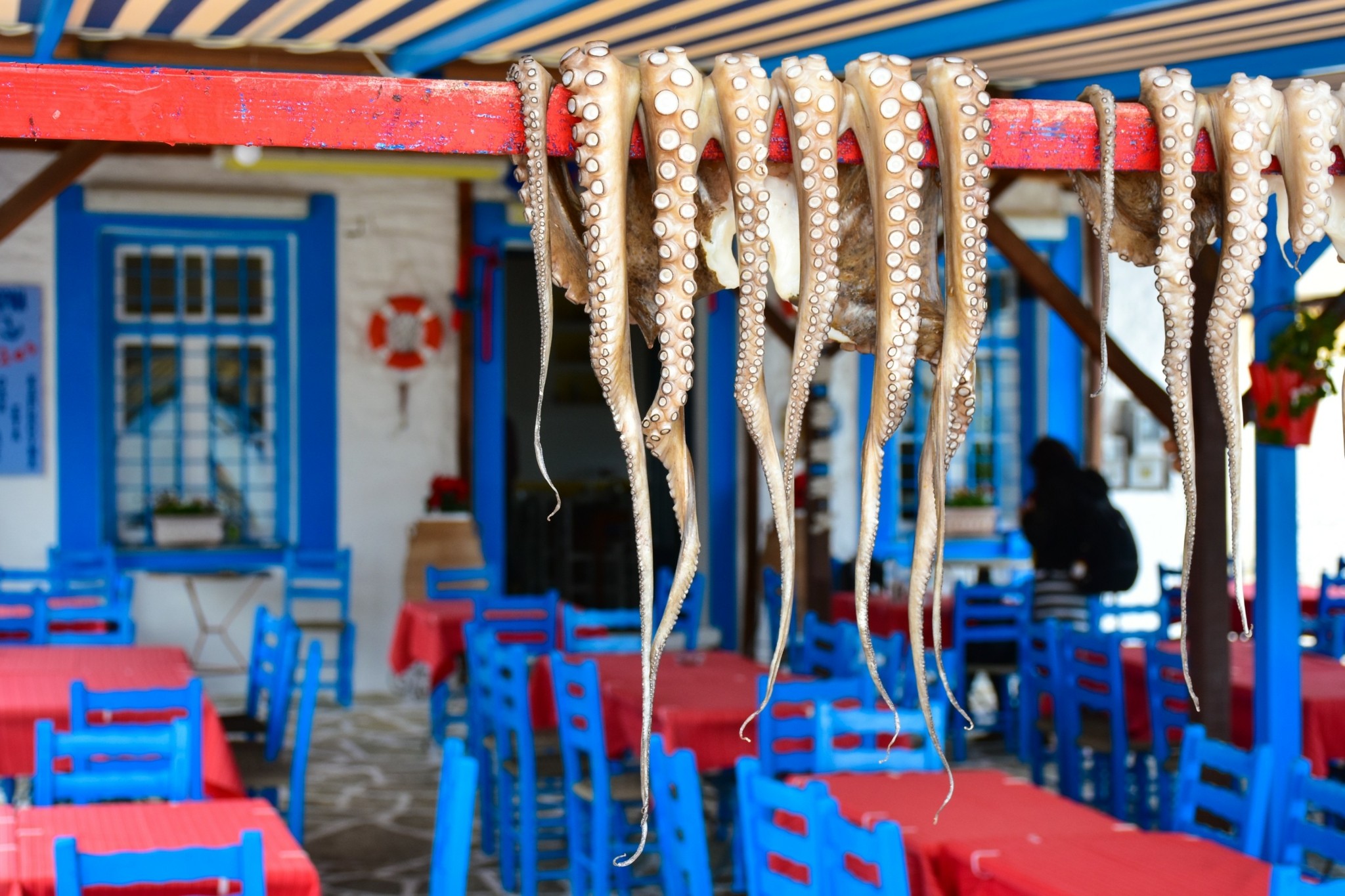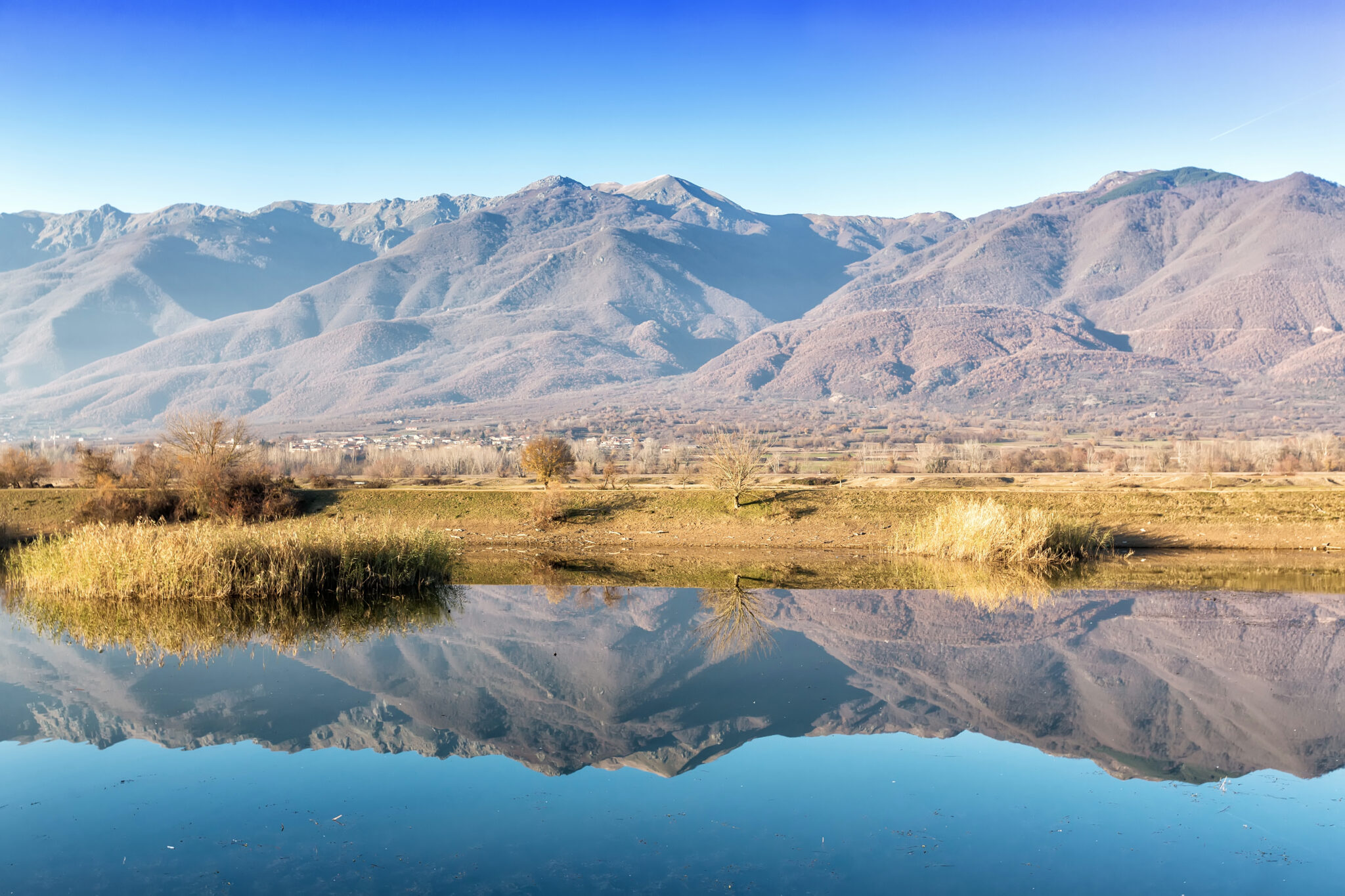It was the first year I was allowed to go on holidays alone and, not knowing anything, I opened a magazine/book called Holidays and came across an article about Pelion that read: Anyone who hasn’t been to Pelion doesn’t know what paradise looks like.
And so, I decided to get to know paradise.
Since then, the relationship became unique and non-negotiable in time. Every year, if I don’t pass through Pelion, it is as if I haven’t had a holiday. Here I have to admit that I am in love mainly with the eastern and north-eastern Pelion. Because one should know that the mountain has two faces. West Pelion, washed by the Pagasetic Gulf, is more peaceful, overgrown with olive trees, with beautiful beaches protected from the winds and amazing villages, cosmopolitan and touristically developed, especially in the northwest. Ornate houses with the characteristic architecture of Pelion, great mansions that capture the eye and soothe the soul.
The other side, East and Northeast Pelion, wild and forested, overlooks the vast Aegean Sea, which also often lashes out at it when the weather is wild. Even in summer, the famous Pelion squalls cool it down for a few hours, only to let it soak up the sun’s warmth right after.
As soon as I arrive in Ano Volos, I turn off the air conditioner and throw open the windows to enjoy the first musky smells of the mountain, mixed with moist soil, intense greenery and herbs. Pelion welcomes you cool, light and green.
The Pelion we don’t know
At this point I should tell you some of Pelion’s peculiarities, which are from rare to unique in Greece.
First, Pelion has the most diverse flora in the country, since in this very mountain almost everything grows. Particularly, one could say that the flora of north-east Pelion is synonymous with the concept of the Greek jungle. If Greece has a jungle, it is right here. Planes, beeches, chestnut trees, oaks, even pines and all kinds of shrubs intertwine with ivy and ferns, creating an inaccessible natural environment that truly resembles a jungle, as there is no way to cross it except by following an existing trail or by cutting a path yourself, using axes and knives.
Secondly, it is perhaps the only mountain in the world where you can gaze at the sea while descending the ski slope. This is truly unique.
Thirdly, Pelion is perhaps the only travel destination in the country that has equally vibrant and lucrative tourist traffic all year round, although this fact is often overlooked. As much as you are charmed in winter by the snow-covered mountain, dotted with warm fairy-tale houses and hotels of remarkable architecture, fireplaces, its small ski resort and traditional winter cuisine, you will be equally enchanted by its beautiful beaches – both inside and outside the Pagasetic Gulf.
I usually arrive in Pelion from the road of Velestinos, Ano Volos, Portaria and Makrinitsa. First stop for a cup of coffee, usually in Makrinitsa, known as the balcony of Pelion, gazing at the beautiful mansions of the village, the cobbled streets and stone-built houses, the towering plane trees and flowering courtyards, the ornate fountains and stone bridges, in addition to the stunning views of Volos and the Pagasetic Gulf.
Quickly back to the car because the target is, as mentioned, the north-eastern Pelion and more precisely the seaside village of Agios Ioannis. Passing through the mountainous village of Hania, I descent from the relatively new road that connects the ski resort with the village of Kissos. Featuring a picturesque paved central square with one of the most impressive churches in the entire region, a huge plane tree and numerous charming cafes and taverns, Kissos is one of the most beautiful villages of Pelion.
A leafy balcony on the Aegean, hanging over Agios Ioannis; although I like staying close to the beach, I visit Kissos regularly for it has an extraordinary aura, many taverns that serve delicious food and, as I said, one of the most beautiful churches in the country, namely Agia Marina Basilica, adorned with rare iconographies. In one of them God is depicted in the form of a venerable old man. The figure of God has rarely been illustrated; only Michelangelo dared to depict the image of God in his work “Creation” in Capella – Sistina.
Pelion then, Pelion today, Pelion always
I have to admit that I prefer staying in a house in Agios Ioannis –in Pelion in general- and not in a hotel. In the past, I used to go wild camping and pitch my tent in Plaka, a beach just a stone’s throw from Agios Ioannis in the direction of Horefto beach.
Back then, I witnessed Agios Ioannis bustling with famous Greek artists of the time strolling on the beach or sitting on the lawn in the courtyard of the now closed and abandoned Aegli Hotel, or at tables with white tablecloths enjoying the sunsets of Pelion.
Yet, those days are over now. Hence, I am always looking for a house as quiet and as close to the sea as possible, so I can enjoy both the lush mountain landscape and my daily morning swims, but also my summer cooking afterwards, which includes stuffed tomatoes, peppers or zucchini, briam or tourlou (traditional Greek dish; a hodgepodge of sliced summer vegetables and chopped fresh herbs slow roasted in tomato sauce and olive oil), meatballs with fresh-cut French fries, fried whitebait and calamari, moussaka, chicken okra stew or eggs kayanas (scrambled eggs with tomatoes).
Usually I am looking for a house either above Papa Nero beach or above Plaka beach, or even at the lowlands of the village of Mouresi. Both beaches, namely Papa Nero and Plaka, are two of the most beautiful, perhaps the most beautiful of Pelion. The former is wide and sandy, offering amenities such as sunbeds and beach umbrellas and a few accommodations. With small white and grey pebbles, an amazing coral coast, plane trees that almost reach the beach, Plaka is probably the most beautiful beach of Pelion. There are also a few beach umbrellas and sunbeds, plus plenty of space for those who want to bring their own equipment.
In the mornings, I like having breakfast and idling on my terrace, before hitting one of the aforementioned beaches or even one of the beaches located a bit further away, like Agioi Saranta, Mylopotamos near Tsagarada or Damouchari. Most of the times, when I visit Damouchari, I have lunch in one of the taverns situated on the natural scenic harbour. Particularly beautiful and unique, Damouhari was not chosen by chance for the shooting of the film “Mamma Mia”.
Back home for some rest and then an afternoon walk in the neighbouring villages.
First, Agios Ioannis, although a popular tourist resort, overcrowded in the summer, offers pleasant walks on its waterfront. Over the years I realized that around 7:00 to 8:00 pm, the weather changes and air masses come down from the mountain and cover the surface of the sea. Their musk and freshness are unique. Chestnut, fern, oak and plane tree aromas flood your lungs with exultation. Shortly afterwards, dinner at the grills and taverns on the road. Oraia Ammoudia at Papa Nero beach is one of the best taverns. Evenings in Agios Ioannis usually end with a drink – or two – at Paralos bar behind the church.
Apart from noontime, evenings are also magical in Damouchari; romantically lit cobbled streets and houses, with the two picturesque little taverns in the harbour setting the tone. I always go to Barba Stergios on the right side. Then I have drinks at the most scenic bar in the Aegean, on the edge of a cliff. Unfortunately, this year it was closed as the owners decided to turn it into a boutique hotel. Hopefully, the bar will return with the completion of the works.
Damma Mia, a quaint stand-alone beachfront villa, certainly offers a unique stay. Built on the sandy beach of Damouchari, a breath away from the sea, Damma Mia features two bedrooms, each with its en-suite bathroom, and an internal courtyard with a dining area, half inside a cavernous rock. The garden and the beach terrace make it truly unique.
A little higher, take a pleasant walk in Mouresi, a beautiful and prosperous village, stone-built and surrounded by chestnut trees, built on the slope. The main attraction is the large pebbled square with its huge plane tree, in the shade of which a charming tavern spreads its tables, overlooking the lush mountain and the endless blue of the sea.
Let’s go further, just after Mouresi, to the famous Tsagarada. The churches on its four central squares gave their names to the neighbourhoods of Tsagarada. The oldest is that of Taxiarches, followed by Agia Paraskevi with its monumental thousand-year-old plane tree, Agios Stefanos and the neighbourhood of Agia Kyriaki -all connected by cobbled streets and paths. From the road, Tsagarada seems rather small, as most of the houses are hidden in the woods and, thus, hardly visible. But once you decide to leave the main road and wander the paths, you will meet imposing stone-built traditional mansions, stunning neoclassical houses, blossomed gardens and the century-old plane and chestnut trees that all together compose a truly unique and dreamy scenery.
Here, you can dine at Dipnosofistis, Aleka and Lost Unicorn, while for drinks and good music you should visit Skala bar, which also offers a few snacks if you want to grab a bite.
The other route that fascinates me is further north. Take the road that starts from Agios Ioannis, passes over Plaka beach and then becomes a dirt road. The last part of the road is asphalt paved and reaches the umbrageous village of Anilio with its jungle-like vegetation, then the -famous for its flowers- village of Makryrachi (here I always make a stop for some flower shopping), and finally Zagora, another amazing village of Pelion and one of the most famous, especially due to its two breathtakingly beautiful beaches, namely Horefto and Agioi Saranta.
This same road continues to Pouri, a quiet, non-touristic village perched on the mountain with an awe-inspiring view. Here, visit Polydroso tavern, located on the village’s main square, to taste the traditional cuisine of Pelion. Fortunately, Polydroso remains open all year round.
Some Tips:
- Wake up, at least once, very early in the morning, around 7:00-8:00 am for a morning swim when the sea is placid and balmy. Backstroke with a view of the huge green mass of the mountain. A little lie down afterwards on the pebbles, drying off and then back home.
- Rinse yourself after swimming in the spring that flows at the edge of Plaka beach at least once. The water, though shockingly cold, offers a unique feeling of well-being.
- Walk one or two of the many marked trails. That will give your holidays a different feel. Take, for instance, the trail that starts from Papa Nero beach and leads, through a shady path, to Damouchari. Or, take the trail that starts from the village of Anilio and descends to Plaka beach. Ultimately, take the pebbled path of exceptional beauty that starts from Tsagarada and ends at Damouchari, offering incredible views.
- Weather permitting- rent a boat to visit the beaches on the south, some of which cannot be reached otherwise, or the submarine caves on the north.
- At Damouchari beach, there on the edge of the cliff where Damma Mia is built, discover an underwater domed cave under the rock.
- At the end of the same beach, there is a cobbled road that descends from Tsagarada. There you will find the entrance of a magnificent gorge.



